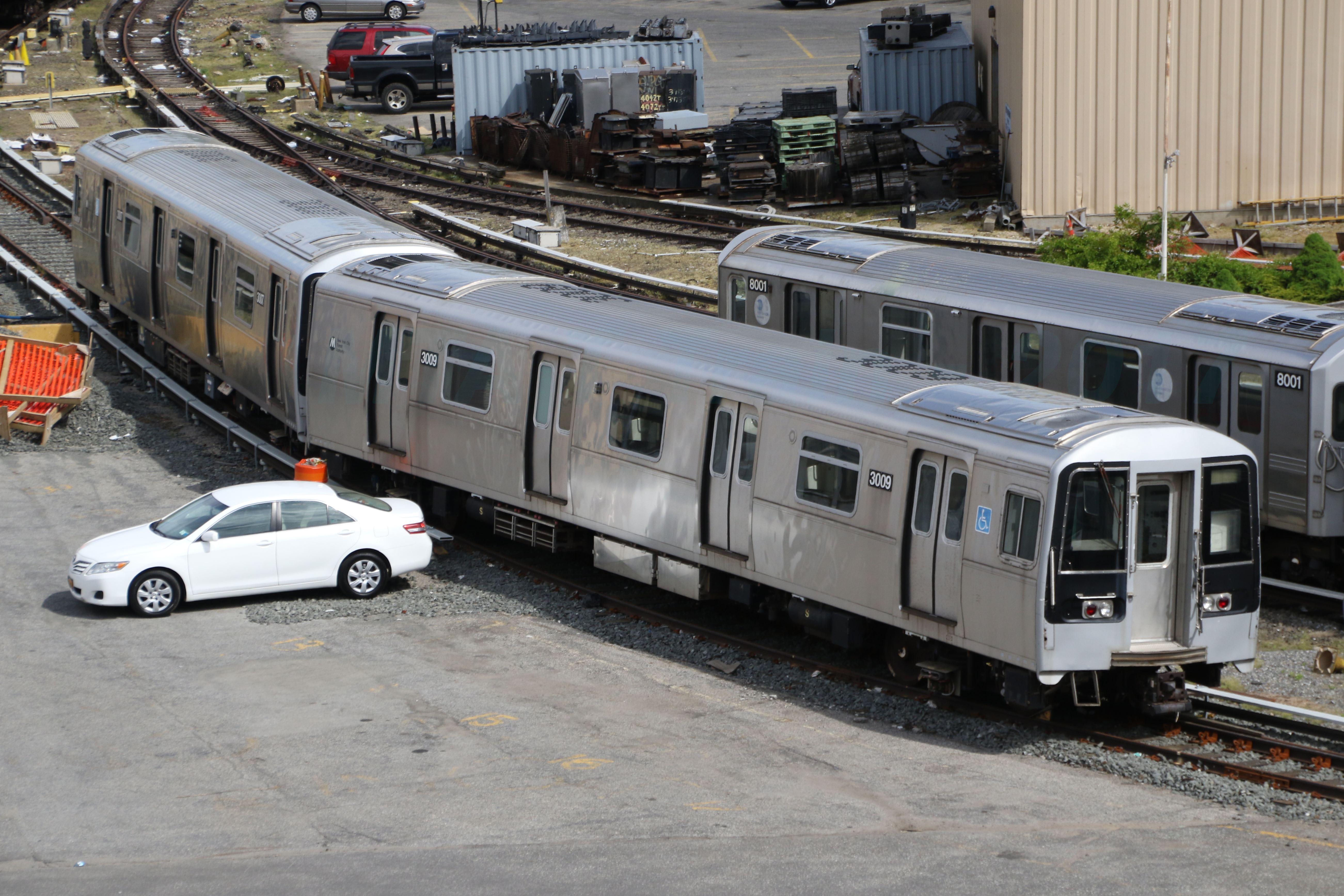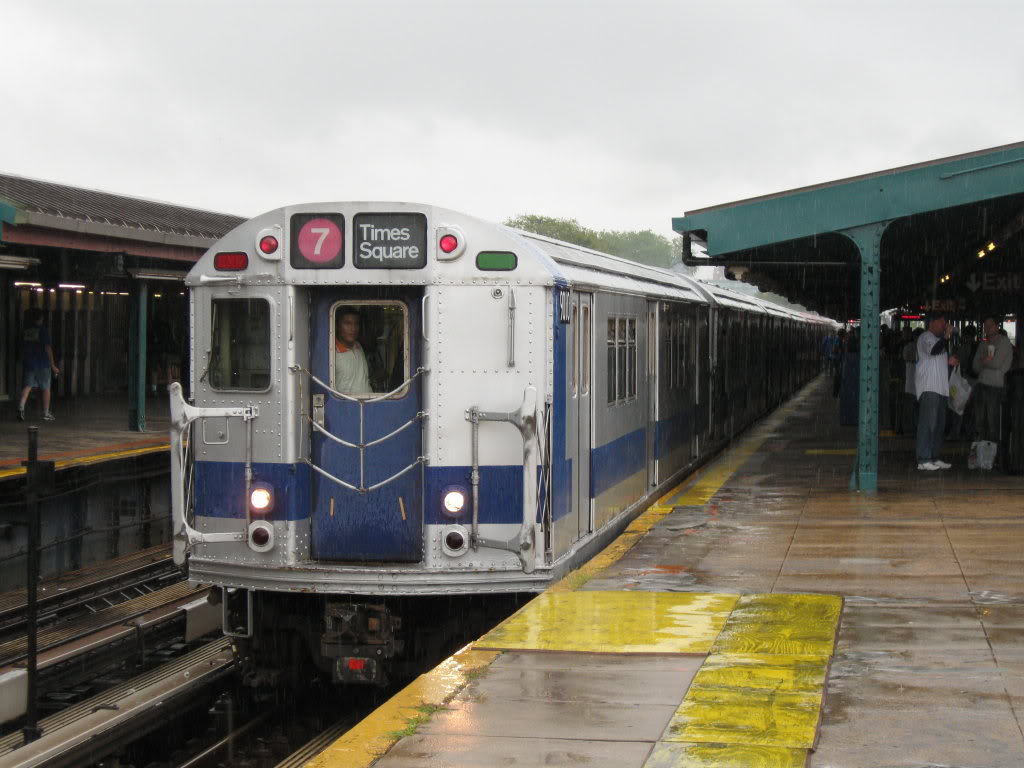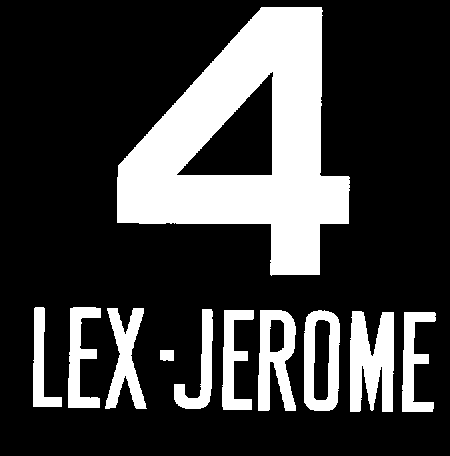|
R142A
The R142A is the second order of new technology cars (NTTs) for the A Division of the New York City Subway. These cars were built by Kawasaki Heavy Industries in the U.S. at Yonkers, New York and Lincoln, Nebraska, and in Japan at Kobe, Hyōgo. They replaced the Redbird trains, including the R26, R28, R29, R33, R33S, and R36. The R142A fleet initially comprised 600 cars, arranged as five-car units. The first R142As were delivered on December 20, 1999. The cars initially experienced minor issues while undergoing testing, but entered service on July 10, 2000, as part of its 30-day revenue acceptance test. After successful completion, the cars entered revenue service by November 2, 2000. The fleet initially ran on the and services of the IRT Lexington Avenue Line. The R142As, along with the R142s, are the first New York City Subway cars to feature recorded announcements. In 2011–2016, 380 cars (7211–7590) were retrofitted with communications-based train control (CBTC ... [...More Info...] [...Related Items...] OR: [Wikipedia] [Google] [Baidu] |
R188 (New York City Subway Car)
The R188 is a class of new technology (NTT) New York City Subway cars built by Kawasaki Heavy Industries for the A Division. The fleet entered service in 2013, displacing the 1980s-era R62A cars that operated on the , in conjunction with the automation of the IRT Flushing Line's signal system with communications-based train control (CBTC). The R188 order also expanded the 7's fleet as part of the 7 Subway Extension, which opened in 2015. Of the 506 cars in the fleet, only 126 were built brand-new; the remaining 380 cars were originally part of the R142A fleet that entered service in 2000, before being upgraded to R188s with the installation of CBTC equipment. The fleet first entered passenger service on November 9, 2013, and the final cars were delivered in June 2016. Description 380 of the R188s are numbered 7211–7590, and the remaining 126 cars are numbered 7811–7936. Cars 7211–7590 (380 cars) used to be R142As and were converted to R188s from 2010 to 2016, car n ... [...More Info...] [...Related Items...] OR: [Wikipedia] [Google] [Baidu] |
New Technology Train
New Technology Train (NTT) is the collective term for the modern passenger fleet of the New York City Subway that has entered service since the turn of the 21st century. This includes the current R142, R142A, R143, R160, R179, and R188 models, along with the R211 model which is currently being delivered, and the planned R262 model. Two prototypes, the R110A and R110B, were used to test the features that would be found on all NTT trains today. Sometimes referred to as New Millennium Trains, they are known for improvements in technology, energy efficiency, reliability, and comfort along with advanced passenger information systems. All of these trains are capable of operating with communications-based train control (CBTC)—which can allow for automatic train controls and compatibility with updated signal systems—and either already have CBTC or are scheduled to be retrofitted with the system. Much of the engineering and construction efforts for the fleet have been done by K ... [...More Info...] [...Related Items...] OR: [Wikipedia] [Google] [Baidu] |
R142 (New York City Subway Car)
The R142 is the first successful model class of the newest generation or new technology (NTT) A Division cars for the New York City Subway. It was built by Bombardier Transportation in La Pocatière, Quebec, Canada and Barre, Vermont, U.S. with final assembly performed at Plattsburgh, New York, from 1999 to 2003. There are 880 cars numbered 6301–7180 and another 150 cars numbered 1101–1250, for a total of 1,030 cars, all arranged as five-car sets. Together with the R142As, they replaced the Redbird trains, including the R26, R28, R29, R33, R33S, and R36. The R142s and R142As are the first New York City Subway cars to feature recorded announcements. The first R142s were delivered on November 16, 1999, though they initially experienced minor issues that were reported while undergoing testing. Following the completion of non-revenue service testing, the R142s were placed into revenue service on July 10, 2000 as part of its 30-day revenue acceptance test. After successful ... [...More Info...] [...Related Items...] OR: [Wikipedia] [Google] [Baidu] |
R36 (New York City Subway Car)
The R36 was a New York City Subway car model built by the St. Louis Car Company from 1963 to 1964. The cars are a "follow-up" or supplemental stock to the A Division's R33s, which some of the cars closely resemble. A total of 424 cars were built, arranged in pairs. The order includes World's Fair cars comprising 390 cars, and Main Line cars comprising 34 cars. The R36s entered service on October 24, 1963, and were overhauled in the mid-1980s. They were retired by 2003 with the delivery of the R142 and R142A cars. While most cars were reefed, some have been preserved, and others have been retained for other purposes. Description The R36s were numbered 9346–9769. They were the last entirely LAHT bodied (non-stainless steel) cars built for the New York City Subway. Cars 9346–9523 and 9558–9769 were specifically purchased for service on the IRT Flushing Line ( and trains), which was the closest line to the 1964 New York World's Fair. The cars were also referred to as ''"Wo ... [...More Info...] [...Related Items...] OR: [Wikipedia] [Google] [Baidu] |
New York City Subway
The New York City Subway is a rapid transit system owned by the government of New York City and leased to the New York City Transit Authority, an affiliate agency of the state-run Metropolitan Transportation Authority (MTA). Opened on October 27, 1904, the New York City Subway is one of the world's oldest public transit systems, one of the most-used, and the one with the most stations, with New York City Subway stations, 472 stations in operation (424 if stations connected by transfers are counted as single stations). Stations are located throughout the boroughs of Manhattan, Brooklyn, Queens, and the Bronx. The system has operated 24/7 service every day of the year throughout most of its history, barring emergencies and disasters. By annual ridership, the New York City Subway is the busiest rapid transit system in both the Western Hemisphere and the Western world, as well as the List of metro systems, seventh-busiest rapid transit rail system in the world. In , the subway deliv ... [...More Info...] [...Related Items...] OR: [Wikipedia] [Google] [Baidu] |
R29 (New York City Subway Car)
The R29 was a New York City Subway car model built by the St. Louis Car Company in 1962 for the IRT A Division. A total of 236 cars were built, arranged in married pairs. The R29s entered service on April 28, 1962, and received air conditioning by 1982. The fleet was rebuilt by Morrison–Knudsen between 1985 and 1987. The R29s were replaced in 2001 & 2002 with the delivery of the R142 and R142A cars, with the last train running on October 24, 2002. After being retired, most R29s were sunk into the ocean as artificial reefs, but two cars have survived. Description The R29s were numbered 8570–8805. Between 1985 and 1987, the R29s were overhauled under contract ''R99''. Therefore, the cars are also known as R99s in their post-overhaul state. The R29s are very similar to appearance to the R26s and R28s, with the exceptions that they were built by a different company and permanently paired with link bars (instead of couplers). The R29s were split into two sub groups: * Car ... [...More Info...] [...Related Items...] OR: [Wikipedia] [Google] [Baidu] |
R33S (New York City Subway Car)
The R33S (also known as R33 World's Fair or R33WF) was a New York City Subway car that was built by St. Louis Car Company in 1963 for the IRT A Division. They were purchased for service on the IRT Flushing Line ( 7 and trains), which was the closest line to the 1964 New York World's Fair. A total of 40 cars were built, arranged as single cars. While in regular service, each R33S was coupled to five two-car consists of R36 cars to make 11-car trains for the 7 and routes. The R33S fleet entered service on September 26, 1963, and was originally painted in a light blue turquoise "Bluebird" scheme. The fleet was overhauled in the mid-1980s, during which the cars were painted red, leading to the nickname " Redbirds". The R33S fleet was replaced in the early 2000s with the delivery of the R142 and R142A cars, with the last train of R33S and R36s running on November 3, 2003. After being retired, some R33S cars were preserved, but most were kept for work service; many of the work ... [...More Info...] [...Related Items...] OR: [Wikipedia] [Google] [Baidu] |
R28 (New York City Subway Car)
The R28 was a New York City Subway car model built by American Car and Foundry (ACF) from 1960 to 1961. The cars were a "follow-up" or supplemental stock for the A Division's R26s and closely resemble them. The average car cost per R28 was $114,495. A total of 100 cars were built, arranged in married pairs. The R28s entered service in late-1960 and received air conditioning by 1982. The fleet was rebuilt by Morrison–Knudsen between 1985 and 1987. The R28s were replaced in 2001 & 2002 with the delivery of the R142 and R142A cars with the last train running on October 7, 2002. After being retired, most R28s were sunk into the ocean as artificial reefs, but four cars have survived. Description The R28s were numbered 7860–7959. They were the second order of cars to not be built with operating cabs at both ends after the R26s. They were also the last passenger cars built by ACF, with the closure of the Berwick assembly plant following the delivery of the final cars delivered in ... [...More Info...] [...Related Items...] OR: [Wikipedia] [Google] [Baidu] |
R33 (New York City Subway Car)
The R33 was a New York City Subway car model that was built by St. Louis Car Company in 1962 and 1963. The cars are a "follow-up" or supplemental stock for the A Division's R29s and closely resemble them. The cars were also referred to as R33MLs (R33 Main Line) to distinguish them from the R33S's. A total of 500 cars were built, numbered 8806–9305, and arranged in pairs. The R33s entered service on November 15, 1962, and were the first A Division fleet to be retrofitted with air conditioning, being retrofitted between 1972 and 1982. The R33 fleet was overhauled between 1987 and 1991. The R33s were replaced in the early 2000s with the delivery of the R142 and R142A cars, with the last train running on April 20, 2003. After being retired, most R33s were sunk into the ocean as artificial reefs, but several cars have survived. Description The R33s were numbered 8806–9305. The cars were referred to as R33MLs (R33 Main Line) to distinguish them from the R33S's. The R33s a ... [...More Info...] [...Related Items...] OR: [Wikipedia] [Google] [Baidu] |
R26 (New York City Subway Car)
The R26 was a New York City Subway car model built by American Car and Foundry from 1959 to 1960 for the IRT A Division. A total of 110 cars were built, arranged in married pairs. The R26s entered service on October 12, 1959, and received air conditioning by 1982. The fleet was rebuilt by Morrison–Knudsen between 1985 and 1987. The R26s were replaced in 2001 & 2002 with the delivery of the R142 and R142A cars, with the last train running on October 7, 2002. After being retired, most R26s were sunk into the ocean as artificial reefs, but two cars have survived. Description The R26s were numbered 7750–7859. They were the first cars to not be built with operating cabs at both ends. The even-numbered car carried the motor generator and battery set for electrical equipment, while the odd numbered car held air compressor for the brakes. A special version of the H2C coupler was used to link the cars, so they could easily be split if needed, and thus, they were called "semi-perman ... [...More Info...] [...Related Items...] OR: [Wikipedia] [Google] [Baidu] |
Kawasaki Railcar Manufacturing
is the rolling stock manufacturing subsidiary of Kawasaki Heavy Industries. Since beginning operations in 1906, the company has produced more than 90,000 railroad cars. Products As indicated by the company name, the company mainly produces railroad vehicles. Recently Kawasaki has received orders from customers in foreign countries, including Ireland and the United States. All products manufactured for the US rail market are sold through Kawasaki Rail Car Inc., another division of Kawasaki Heavy Industries. An assembly plant in Lincoln, Nebraska produces fully completed cars and "knocked down" cars. Because of substantial sales to the New York City Subway and various commuter lines, an additional assembly plant was established in Yonkers, New York in 1986 for final assembly of cars built in Lincoln. In November 2020, Kawasaki Heavy Industries announced that it would spin off some of its businesses, including the rolling stock division from October 2021. Japan Railway ... [...More Info...] [...Related Items...] OR: [Wikipedia] [Google] [Baidu] |
4 (New York City Subway Service)
The 4 Lexington Avenue Express is a rapid transit service in the A Division of the New York City Subway. Its route emblem, or "bullet", is colored since it uses the IRT Lexington Avenue Line in Manhattan. The 4 operates at all times. Daytime service operates between Woodlawn in the Bronx and Utica Avenue in Crown Heights, Brooklyn, via the IRT Jerome Avenue Line in the Bronx, express via the Lexington Avenue Line in Manhattan, and the IRT Eastern Parkway Line in Brooklyn; limited rush hour service, as well as late night service, is extended beyond Utica Avenue to/from New Lots Avenue in East New York, Brooklyn via the IRT New Lots Line. During rush hours in the peak direction, 4 trains skip 138th Street–Grand Concourse. Late night service makes all stops except for Hoyt Street. For up to an hour after evening events that are held at Yankee Stadium, a special downtown-only express service runs between and . Until 1983, rush hour 4 trains originated and terminated at Fla ... [...More Info...] [...Related Items...] OR: [Wikipedia] [Google] [Baidu] |





